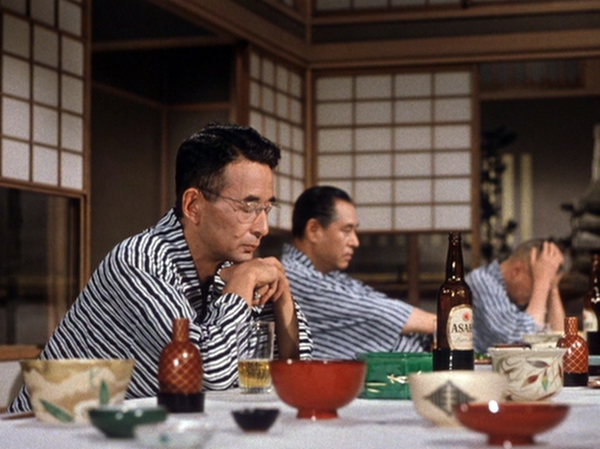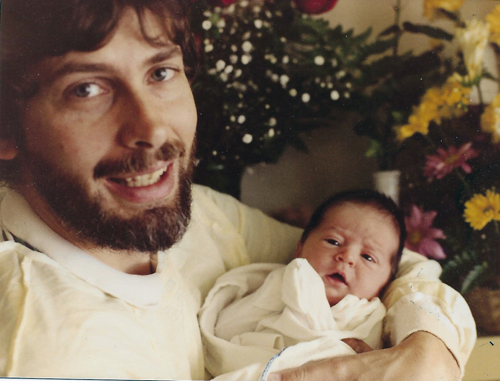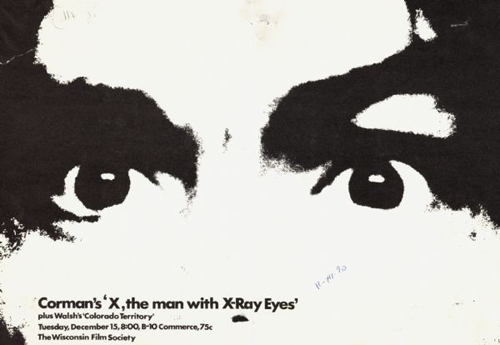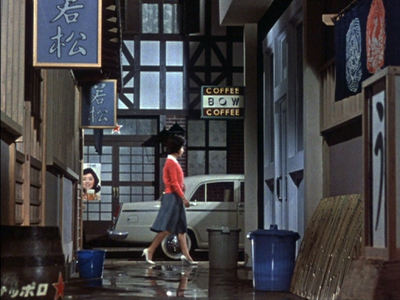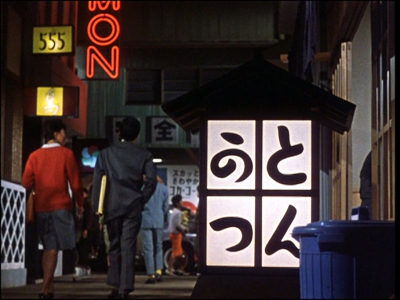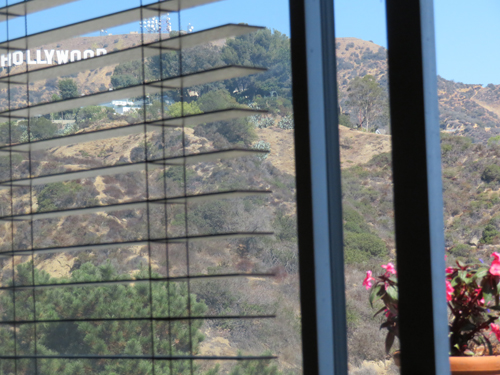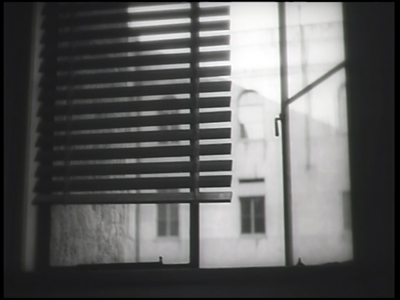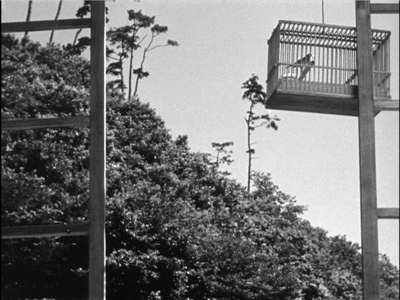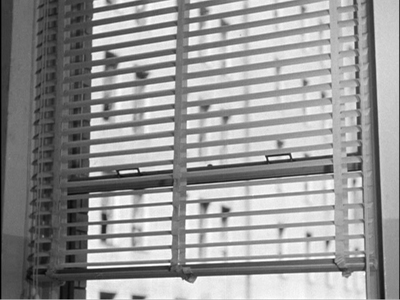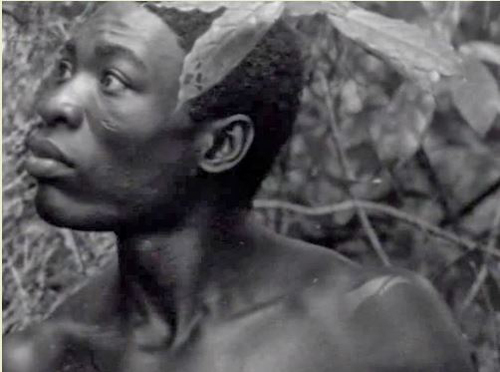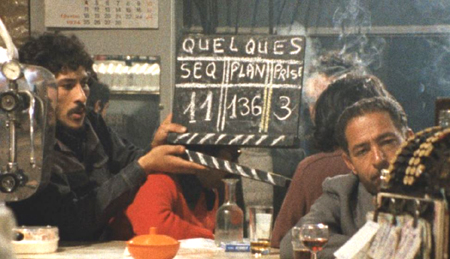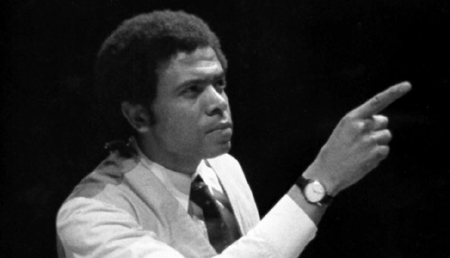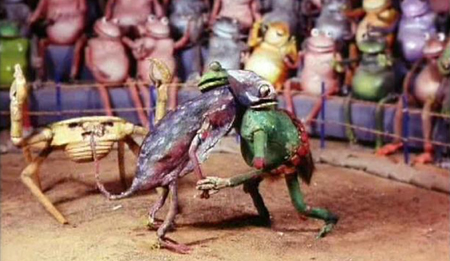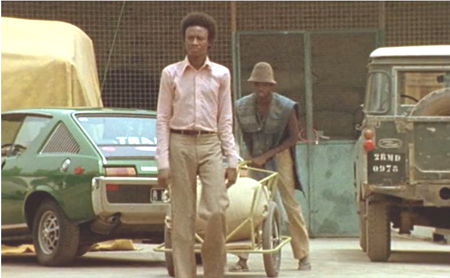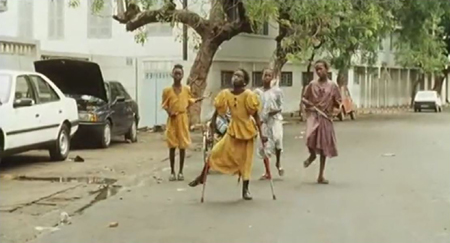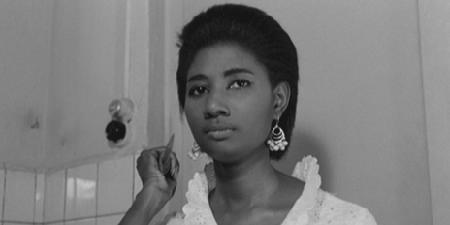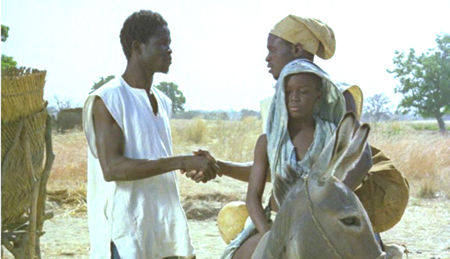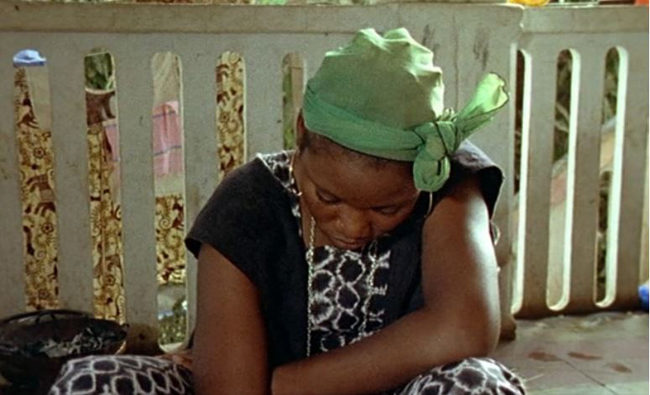Archive for July 2019
Kindest, E.: A memoir of Edward Branigan
Equinox Flower (1958).
DB here (but writing for Kristin too):
Edward Branigan died on Saturday, 29 June, in Bellingham, Washington. He had fought for a year against Acute Myeloid Leukemia. He was 74.
Edward was an ambitious, highly original film theorist. His first book, Point of View in the Cinema (1984) has become the definitive study of the creative POV options available within “classical” filmmaking. Narrative Comprehension and Film (1994) is a sweeping account of the viewer’s activity in ascribing meaning to stories on the screen. Projecting a Camera: Language-Games in Film Theory (2006) is a meta-level account of how critics and theorists talk about films; it teases out different capacities and qualities we assign to “the camera.” Edward’s last book, published in December 2017 is Tracking Color in Cinema and Art: Philosophy and Aesthetics. It ranges across physics, psychology, art history, and philosophy (mostly Wittgenstein) to explore how we understand and appreciate color imagery.
Edward was also a prodigious editor, producing with Warren Buckland The Routledge Encyclopedia of Film Theory (2015) and with Chuck Wolfe the American Film Institute Readers, a series of forty anthologies on a huge range of topics. He taught at UCLA and Iowa, but his tenure home was UC–Santa Barbara, where he started in 1984 and remained until retiring in 2012.
Keeping in touch
Edward and Evan Branigan, 1984.
So much for a bare-bones Wikipedia entry; Edward deserves a full-blown one as soon as possible. What even that couldn’t capture is the intense admiration, even devotion, he aroused in students and colleagues. He won many teaching awards, including a Distinguished Service Award from the graduate students of his department. For his peers in the profession he was a reliably easygoing, cheerful presence in the sometimes chilly corridors of academe.
Kristin and I met Edward in 1974, and we kept up with his life (one far more dramatic than ours) as best we could, separated by half a continent. Over the decades we visited him occasionally in Santa Barbara and Los Angeles. For too-few times he returned to Wisconsin for summer vacations. Our last reunion was in September of 2016 at a Seattle coffee house.
My email records before 2004 have gone astray, but after that I count over 400 messages, some very long. I could fill this entry with remarkable passages, and I expect other correspondents have equally plump archives. From 2007:
John [Kurten] and I have had three consecutive movie binge weekends. it’s a treat to start watching films in the afternoon and never think about stopping (more or less for two days at a time) — isn’t this what the profession promised?
He often wrote to correct mistakes I made in books and essays, so getting this reaction to my In the City of Sylvia entry left me elated. (Fortunately for me, he hadn’t seen the film yet.) One sequence perfectly fulfilled the conditions he laid out in his POV book.
You madman, it’s brilliant. Your latest blog. Maybe the film, too. From what you say, I thought of layers and uncertainties, intersections and random slidings. Open expectation or expectation opened. Is *Sylvia* for the point-of-view shot, i.e. for a point in space, what *The Conversation* was for sound, *Blow-up* for the photograph, *Time Regained* for memory, and etc.?
When I discovered a “Hitchcock supercut” compiling favorite motifs and themes, I was reminded that in the pre-digital era Edward had mounted something similar for his course.
Thanks for this link. . . . I did teach Hitchcock a number of times in the mid-to-late 80’s. My final lecture was exactly and precisely as described on the link you sent. All (almost) of Hitchcock’s films were represented on two Kodak Carousel projectors jammed full. I projected two simultaneous images side by side of visual motifs (staircases, camera movements…etc.). Slow dissolves between each pair of images to the next pair. I made a music tape and keyed certain images to climaxes in the music. Only taught the course in the 80’s. Seems an age ago. Not to mention the changes in technology. I have ten metal cases of slides that are orphans now with no projectors. As do you and Chuck [Wolfe] with many more cases. I had some of my slides digitized, but the quality was disappointing.
But later he reports his house fire:
I have realized that my eight cases of 35mm slides taken directly from 16mm prints — collected since 1974 — are gone in the fire, including a slide from every setup of An Autumn Afternoon.
Speaking of Hitchcock, in 2012 I told him that Sir Alfred would have a place in the book I was planning on the 1940s. This got him going:
Mr. missed D.,
Rethinking Hitchcock! I want to read it. . . . Nice to hear from you generally and I trust you and KT to be well. I suspect the latter has seen The Hobbit many a time so far and planning still more viewings. Nicholas and I are in Seattle. This morning after a large breakfast (omelet, steel-cut oatmeal, hash browns, muffins, black tea) I watched out a tenth floor window as the monorail docked at the Space Needle, while visiting my parents and the other Usual Suspects (i.e., relatives), and planning further hiking, movies, bridge, serious eating, shopping ski apparel activities, and so forth. It’s fairly deeply relaxing here. (It suggests what retirement could be for me in Summer 2014, retirement being in name only at the moment.) I saw two float planes land on Lake Union, taxiing to the shore, water spraying up over the floats, red and green lights continually snapping on and off on both wings (i.e., not one red on the left wing, one green on the right wing). Interstate 5 is in the distance, the car headlights of morning commuter traffic turning it into a winding white snake as the day is strongly grayish, clouds about 40 stories up, swirling, banking up, no sign of sky (thus solar panels are useless), the Olympic Mountains are in the distance, people are walking on the streets below this way and that with purpose, with destinations firmly in mind. Have I mentioned the large rotating, neon pink elephant sign glimpsed in the distance between some buildings that advertises simply, “Car Wash,” as if it doesn’t rain often in Seattle? The sign stops briefly on every rotation to shine out its message in white neon bulbs, “Car Wash,” the message never changing. Up here I’m living in a parenthesis. Looking out at a vast aquarium.
He never forgot my birthday. This is from 2014, as is the photo at the bottom.
HB, big guy. Wherever you are, it’s still HB. Thinking of you.
I’m traveling for a month, meeting many persons, hiking above the treeline in the Rockies, World Lacrosse Championships, Denver, Boulder, Fort Collins, Estes Park, The Stanley Hotel (think The Shining), Seattle, northern Wisconsin, seeing all the sons, and more. Consulting on two legal cases. Have no time. Retirement is the bestest. Even trying to write.
From 2018:
I’ve seen Blade Runner 2049 seven times. A masterwork. Been drinking the Blade Runner Director’s Cut Johnnie Walker Black Label Scotch in the film’s Italian crystal glasses. Watched all sixteen episodes of the Netflix series, Babylon Berlin, in three nights. Should interest you in terms of detective fiction. First-rate fun. Weimar seems like hell with all its circles intact. It’s not up to Fassbinder’s Berlin Alexanderplatz, but what is?
During his cancer treatments, he managed to keep corresponding. Although the paragraphs got shorter, the tone never changed. This from May of this year:
I appreciate your generous words and kind thoughts. I haven’t been feeling well. The blasts have been creeping back. . . . More chemo is likely, maybe a clinical trial. . . .
Enemy. The film streams on Netflix. Take a look. Don’t read anything about it, and its shocks, until it settles on you.
Game of Thrones ends tomorrow for all time until the HBO prequel is ready. I think Dany is killed by Ayra disguised as Tyrion. Jon Snow moves the Iron Throne to Westeros with him upon it.
He inevitably signed these energy bursts, “Kindest, E.”
The 70s: Beyond the New Hollywood
Wisconsin Film Society poster, 1970.
My most vivid memories come from the years we knew him as a student and friend here in Madison. He was part of a thriving intellectual community that, from the distance of today, informed our lives in deep and lasting ways.
Edward, Vietnam veteran (Marines, Communications), took a film course with me in spring 1974, his final year of law school at UW. It was my second semester of full-time teaching. He then signed up for our graduate program. I shouldn’t have been surprised by his shift of career. As an undergraduate he had majored in Electrical Engineering and English. He also wrote poetry.
He entered a community bursting with talent. When I got here in 1973 I was handed four superb TA’s: rigorous and righteous Doug Gomery, witty and charming Brian Rose, meticulous silent-film aficionado Frank Scheide (who looked like a young Buffalo Bill), and already stunning experimental filmmaker James Benning. There was Maureen Turim, fresh from a year in Paris and immersed in Bresson and the avant-garde; Diane Waldman, who’d write the still-definitive account of Hollywood’s female Gothics; Fina Bathrick, who was researching family melodrama before almost anybody else; Marilyn Campbell, the first I think to analyze the Fallen Woman film of the 1930s; Bette Gordon, already at work on her own fine films; and Peter Lehman, already an eloquent advocate for John Ford, Blake Edwards, and Roy Orbison. While everybody else was hot for the new Hollywood, we were into the old one, along with films from beyond the US that later would gain their proper recognition.
Coming in the door were still more gifted grads: Vance Kepley, Janet Staiger, Kerman Eckes, Barb Follick, Barbara Pace, Nancy Ciezki, Diane Kostecke, Mary Beth Haralovich, Cathy Klaprat, Don Kirihara, Darryl Fox, and on and on. I was also establishing ties with young scholars elsewhere: Phil Rosen, Mary Ann Doane, and Bobby Allen at Iowa; Noël Carroll, Paul Arthur, and Tom Gunning at NYU. Networks and enduring friendships were forming. An actual academic field was emerging.
Like every young faculty member, I was learning on the job. I was groping to figure out the problems that interested me most–film form and style, considered in a comparative historical context. The BFI magazine Screen was having a big impact, but so were translations of works by Noël Burch, the Russian Formalists, and French Structuralists. Feminism, neo-Marxism, and Third World politics found their way into our curriculum. Barthes’ S/z became a constant reference point. I went on WORT radio to defend semiotics and The Godfather.
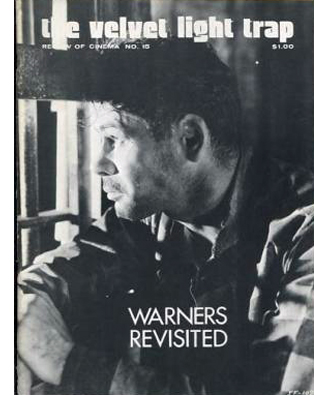 Just as important, American distributors like New Yorker and Audio-Brandon were releasing new European and Latin American titles as well as old works from Asia. In those pre-video days, 16mm prints were our best chance to catch up, not just through classroom showings but through the twenty-plus campus film societies. (There were Sam Fuller double features, but also Godard retrospectives and political documentaries.) And we had The Velvet Light Trap, which published zesty in-depth studies of genres, studios, and auteurs. The campus was movie-mad.
Just as important, American distributors like New Yorker and Audio-Brandon were releasing new European and Latin American titles as well as old works from Asia. In those pre-video days, 16mm prints were our best chance to catch up, not just through classroom showings but through the twenty-plus campus film societies. (There were Sam Fuller double features, but also Godard retrospectives and political documentaries.) And we had The Velvet Light Trap, which published zesty in-depth studies of genres, studios, and auteurs. The campus was movie-mad.
In my seminar on “Classical Hollywood Cinema and Modernist Alternatives,” we analyzed random titles from the Warners and RKO archives alongside Ordet, Equinox Flower, Four Nights of a Dreamer, and Chronicle of Anna Magdalena Bach. The Student Union screened Play Time in 35 across a whole weekend so my theory class could write essays on it. We brought touring Japanese, French, and Italian film packages to campus.
His Girl Friday, Meet Me in St. Louis, Possessed, Naniwa Elegy, Genroku Chushingura, Tom Tom the Piper’s Son, Death by Hanging, The Man Who Left His Will on Film, The Red and the White, and many other films became touchstones for us. In the midst of all this, senior colleague Tino Balio helped us see how to tie aesthetic analysis to the protocols of national film industries and similar institutions. He became a good friend and ally in many skirmishes, as did Jeannie Thomas Allen, with her work on women and media.
For Kristin and me, the years 1973-1980 crystallized research programs we never left behind. In these years I wrote my Dreyer book, Kristin did her dissertation on Ivan the Terrible, and we published Film Art: An Introduction. With Janet Staiger we began work on what became The Classical Hollywood Cinema. Meanwhile, our students were writing articles for journals and showing up en masse at conferences, a good-natured mafia.
Edward plunged into this and never looked back. He made an offbeat, poetic narrative film (which I hope his family can locate). He ran scenes to and fro on our Steenbecks and analytical projectors, checking match cuts and camera movements. He and Kristin drove down to Chicago for back-to-back screenings of Lancelot du Lac. He began writing on film color, a focus of his research for the next forty years. Above all, we were bound together by Ozu.
Tokyo Story was circulating in 16mm after its smashing New York revival in 1972, and Audio-Brandon and New Yorker acquired several more Ozu titles, early and late. That began our love, or rather mania, for this director. We three watched those prints over and over, eventually writing two essays for Screen in summer of 1976. Edward hoped for a long time to write his doctoral dissertation on An Autumn Afternoon, planning to devote an entire chapter to the woman in the red sweater who passes through scene after scene.
I still want to read that.
Ozu was never far from our thoughts. When Edward finished his dissertation, he gave me a framed still from Equinox Flower. It surmounts this entry. I learned so much from our conversations that I dedicated my Ozu book to him, with a Japanese inscription that means “the pupil who teaches the teacher.” As soon as the book went online, he wrote to tell me of Net problems.
I downloaded the Ozu book. Now, how do I get the color photos and the new crisp b&w’s? Must they be downloaded individually, one at a time? I want them in the book. I want them.
Thanks to his persistent pressure, the University of Michigan created a smoother download.
One constant point of discussion in the 70s was Ozu’s red teakettle in Equinox Flower. When in 2011 Kaurismaki noted it, I sent the link to Edward. He replied:
The red teakettle was a killer for sure. I never really leave the 70s and Vilas Hall… Late nights. 16mm stop motion. I also very much appreciated your blog entry on the four looks at Ozu. Shouldn’t you at some point do a streaming video for your blog?
Sometimes Ozu was merely evoked, not mentioned. One email had this attachment.
Edward knew I would immediately think of a shot from Dragnet Girl and two from Early Summer.
My last email from Edward in May includes this:
Ozu… A year ago I looked at all six of his color films. The color designs are distinctive and sophisticated, but perhaps too complicated to write about. . . .
If he were still with us, I bet he’d try.
Edward’s vitae is available here.
We’re grateful to all those who have shared Edward’s company with us over the years. Vance Kepley helpfully corrected my memory of the 1970s. Thanks especially to Roberta Kimmel and Evan Branigan, who sent us bulletins.
P.S. 9 July 2019: Thanks to Chuck Wolfe, Edward’s tireless colleague at UCSB, for correcting my initial claim about his undergraduate major.
P.S. 12 July 2019: The Film and Media Studies Department at UCSB has posted its tribute to Edward.
Edward Branigan, 1945-2019.
Il Cinema Ritrovato 2019: Who put the Pan in Pan African cinema?
Muna Moto (1975)
Kristin here–
With the plethora of films on offer this year at the XXXIII edition of Il Cinema Ritrovato, I decided that a necessary strategy for choosing those to watch would be to follow certain threads faithfully and then fill in the remaining time-slots with bits and pieces from other threads. (The entire program, with notes, is online here.)
A program that formed part of the core of my viewing for the festival’s eight and a half days was “Cinemalibero. FESPACO 1969-2019.” It was curated by Cecilia Cenciarelli, whose program notes explain the post-colonial context behind this fiftieth-anniversary celebration:.
“Decolonisation of the screen” also spread at a grassroots level: birthplace of the future FESPACO, the film club of the Centre Culturel Franco-Voltaïque in Ouagadougou (capital of the then Republic of Upper Volta) organised the first Semaine du cinéma africain in February of 1969. Cinema filled every venue of the city: the Nadar and Olympia cinemas, schools, offices, the People’s House and Hôtel Indépendance, the legendary filmmakers’ headquarters. Over 50 films made in Senegal, Niger, Upper Volta, Cameroon and Benin by directors like Sembène, Samb, Traoré, Alassane and Sita-Bella were screened.
The first festival in 1969 has been credited with bringing together filmmakers from all over the continent to launch an effort to support Pan African filmmaking. Short documentaries showing FESPACO in its early years, mostly by Tunisian filmmaker Mohamed Challouf, were shown before several of the features.
The program was built around eleven films directed by pioneers of the festival and the Pan African Cinema effort in general. Of those, eight were recent restorations–some of them dated 2019. Some of these films have been available online in copies with poor visual quality, and I hope now the new prints will make their way onto Blu-ray or DVD. (Ousmane Sembene, the African filmmaker best known in the West, was not represented in the program, but he was instrumental in the founding of FESPACO.)
A key problem in restoring and distributing these classic African films is the fact that many of them had to be processed in European laboratories, often in France, and the original negatives and other elements were stored there. In some cases their whereabouts are now unknown, and tracking them down has been a key factor in making them accessible again.
Here is a brief description of each film, in the order in which they were shown. In keeping with the theme of Pan African cinema, every film originated in a different country.
De quelques événements sans signification (1974, Morocco)
As the program demonstrated, the mid-1970s were a key period for the establishment of Pan African cinema. Many show the influence of European filmmaking, since several African filmmakers studied filmmaking abroad.
Mostafa Derkaoui’s 1974 film shows the influence of Godard. Its early section consists of an extended scene in a bar, where telephoto shots move across a group of filmmakers debating what direction the establishment of Moroccan cinema should take. They take to the streets to explore the situation of workers.
When one of them kills his boss, the plot takes shape as the filmmakers focus on his situation as the subject of their film. Ultimately the worker rejects their interpretation of his crime, leaving the question of how Moroccan cinema should proceed up in the air.
Les bicots-négres, vos voisins (1974, Mauritania)
Two years ago, Med Hondo presented his West Indies (1979) at Il Cinema Ritrovato. It was my introduction to his work. As I reported at the time, Hondo was thoroughly ingratiating and was moved to tears by the enthusiastic applause we gave his film. This year the two diretors who attended, Jean-Pierre Kinongué-Pipa and Souleymane Cissé, were similarly touched by their reception. It is a pity that such recognition has been so long in coming. Hondo’s death in March of this year and Moustapha Alassane’s in 2015 perhaps deprived us of other guests who might have realized that their films will live on as classics.
Hondo’s Les bicots-négres, vos voisins (roughly, “The Arab-niggers, your neighbors”), also shows a strong influence of Godard’s political films of the 1970s, and yet it is thoroughly original as well. The film breaks into seven separate sequences–all politically didactic and yet greatly varied in their approaches. The results is continually riveting.
Aboubakar Sanogo’s program notes describe this variety:
It comprises seven sequences exploring, respectively, the conditions of possibility of cinematic representation in Africa (the opening sequence), historical dissonance through the dialectic of past and present (the post-credit sequence), a flashback to the eve of African independence (the imaginary garden party sequence), the predicaments of the post-colony, an assessment of the living condition of migrant workers and the actions taken to transform these conditions, and a final sequence in a circular mode, which returns to the new cinema.
Thanks in part to these recent restorations, Hondo has emerged as one of the giants of Pan African cinema.
Muna Moto (1975, Cameroun)
Jean-Pierre Dikongué-Pipa was present to introduce this, one of the first films made in Cameroun. Though hampered by budgetary and censorship constraints, Muna Moto is an affecting story attacking both polygamy and the dowry tradition. The basic premise is that for any man in this culture, fathering a child is of prime importance, more than his love for any of his wives.
The protagonist N’gando, a poor, hard-working young man (see top image), aspires to marry N’Domé, a woman who genuinely loves him. The high dowry necessary to arrange such a marriage, however, presents a nearly insuperable barrier. While N’gando struggles to raise the money through low-paying manual labor, his rival, the wealthy M’bongo, who already has three wives who have failed to give him a child, takes the woman as a fourth wife in the hope of conceiving a baby.
She is already pregnant by N’gando, however. (The title translates as “Another’s Child.”) The film becomes a struggle in which N’gando tries to kidnap the baby girl.
The scene of the kidnapping opens the film, without explanation. Only gradually through flashbacks do we come to understand his motives and the tragedy of the situation. Muna Moto effectively uses the flashback conventions of European art cinema (Dikongué-Pipa had studied at the Conservatoire indépendent du cinéma français in Paris) to tell a thoroughly indigenous story with beautiful black-and-white cinematography.
The Cineteca di Bologna’s L’Immagine Laboratory restored the film in 2019 with the support of The Film Foundation’s World Cinema Project. Ideally this will make the film widely available on home video and for viewing at festivals.
Le retour d’un aventurier (1966, Niger), Samba le grand (1977, Niger), and Kokoa (2001, Niger)
Moustapha Alassane directed about two dozen films, mostly shorts. He is credited with being one of the few major African directors who was completely self-taught in filmmaking. Three of his shorts were shown in one program. Le retour d’un aventurier suggests how foreign cultures adversely affect regions of Africa. A popular young man from a village returns from a trip abroad, presenting his friends with six-shooters and cowboy outfits.
At first these would-be cowpokes seem ludicrously out of place, and yet when they begin to terrorize their peaceful village, their violence becomes all too familiar.
Alassane was a pioneer of African animation. His Samba le grand, the first color animated film made in Africa, combines hand drawings and simple cloth dolls to tell a traditional African folk tale effectively.
The most engaging of the three films on the program was Kokoa, a more elaborate and sophisticated cartoon. Using puppet animation, Alassane presents a traditional Niger-style wrestling match among frogs and lizards, with a sideways-moving crab hilariously mimicking the typical movements of a referee (above).
Baara (1978, Mali)
One of the most revered African directors, and certainly so among those living, is Souleymane Cissé.
Cissé was present for a Q&A session after the film. He was forthright in declaring that the somewhat faded print shown was too pink and that he would rather have had it destroyed than shown publicly. Cenciarelli assured him and us that it was the best 35mm print available, and audience members declared themselves delighted to see the film even in a less than ideal copy. Cissé stuck by his opinion and pointed out that the original negative survives intact in Paris. Ideally a restoration comparable to the ones shown in this series will someday be done.
He also mentioned that although he was jailed for accepting French funding for his first feature, Den Muso (“The Girl,” 1975), he still does not know the real reason for his arrest. He wrote the screenplay for Baara (Work) while in jail.
The film tackles the issue of the rise of a working-class in a country that had been largely rural and agriculturally based. The central figure is an uneducated young peasant who comes to the city and works as a porter. His cousin, educated and westernized, attempts to help him but is himself oppressed by the corrupt company officials above him. (Both are seen in the image above.) Unlike many other African directors who went abroad to study filmmaking, Cissé attended VGIK in Moscow (as did Sembene). Possibly the experience accounts for the narrative’s distinctly Marxist tone.
For more on Baara, see Richard Brody’s review on the occasion of a recent screening of the film at the New York African Film Festival.
La petite vendeuse de Soleil (1999, Senegal) and Le franc (1994, Senegal-Switzerland-France)
Earlier this year I reported on the showing of a restored print of Djibril Diop Mambéty’s, Hyenas (1992), at the Wisconsin Film Festival. After Touki Bouki (1973), it was the second of two full-length features Mambéty made before his early death at the age of 53. He followed Hyenas with the two short features (45 minutes each) from an intended trilogy entitled Contes des Petites Gens. The pair were shown together at the festival.
La petite vendeuse de Soleil (The Little Girl Who Sold the Sun) is perhaps Mambéty’s greatest film, though it is difficult to be objective given the utter charm of its central character, along with the performance of Lissa Balera in the role of Sili. Looking past that, though, the film is beautifully shot in locations in and around Dakar, and the narrative unrolls with a calm surety that packs a great deal into a short length.
Mambéty establishes the initial setting in the outskirts of Dakar in a leisurely fashion with dawn shots of the poverty-stricken area. We glimpse Sili limping past the hovels of the suburban slum, though we see other marginal figures as well–including a man pounding large pieces of stone into gravel. The planes taking off and landing behind him establish the theme of poverty juxtaposed with the modern, wealthy society of the city.
Soon we become attached to Sili as a friend takes her into the city to beg. She notices boys making money selling newspapers and soon becomes the first female to become a newspaper seller. Through a fluke of good luck, a wealthy man who sees her as a sign of African progress gives her a large bill to buy all her papers. Immediately confronted by a policeman over the large bill, she defiantly leads the way to the police station and talks the chief into releasing her and a woman charged with theft without reason. Once freed, she celebrates her good fortune by leading a cheerful dance in the street (above) and treating her friends to sodas.
She buys her blind grandmother a large umbrella to shade her as she sings for a living, and she gives small coins to her fellow beggars. Her generosity endears her to a seller of the rival newspaper, who becomes her defender. Her cheerful resilience persists despite bullying by a gang of rival newspaper sellers.
The film combines a realistic view of the grim life of street people in Dakar with a vision of hope represented by Sili. At the end, Dembéty dedicates it to the city’s street children.
Le petite vendeuse de Soleil was restored in 2019. Ideally, the currently available prints, with their somewhat soft images, will be replaced with this impressive version.
The second film in the series, Le franc, is not as engaging. It centers around Marigo, a shiftless man who is beleaguered by his landlady for back rent on his simple shack. He purchases a lottery ticket and, to prevent its loss, glues it to the shack’s door. When the ticket wins, he carries the door to the lottery agency, only to be told that a number on the back of the ticket is essential to allow him to collect the money. The main action is mainly extended slapstick as Marigo clumsily carries the door, frequently falling or dropping it. It’s an entertaining film but lacks the depth of La petite vendeuse du Soleil.
La femme au couteau (1969, Ivory Coast)
Timité Bassori’s La femme au couteau (“The woman with a knife”) is the earliest of the feature films shown at this year’s festival. Like numerous other directors from the continent, Bassori studied at IDHEC in Paris. The influence of 1960s European art cinema seems stronger in this film than in the others in this program.
The story is entirely based around the psychological problems of a young, unnamed, westernized man, whose romance with an unnamed woman is hampered by his disturbing hallucinations of a woman threatening him with a knife. Deciding to avoid traditional African cures, he finally is committed to a mental institution. Ultimately he recalls the trauma that had triggered his psychological problems. The film is skillfully made, with Bassori memorable as the protagonist, but it seems the kind of story that could have been made in a European country as well as an African one.
The excellent print was a product of the African Film Heritage Project, a program within the The Film Foundation’s World Cinema Project; it was restored at the Cineteca di Bologna in 2019.
Wend Kuuni (1982, Burkina Faso)
This classic film was restored in 2017 by the Cinémathèque Royale de Belgique. In his introduction, archivist Nicola Mazzanti expressed bitterness that Wend Kuuni has been neglected by distributors and exhibitors for decades. This new print should give it the second life that it richly deserves.
As Mazzanti pointed out, this is one of the few African films that portrays the continent as it was before colonialists invaded and changed the local culture forever.
The film follows the story of a mute orphan who is discovered nearly dead and taken in by a local farmer. (The title translates as “God’s Gift” and is the name bestowed upon the boy by his adoptive father.) Rather than develop a straightforward drama of the boy’s character arc, director Gaston Kaboré (who collaborated in the restoration) creates what is nearly a documentary on traditional rural life. We see the young protagonist herding sheep, the women of the family grinding grain, and so forth. Any progression in the plot takes place at wide intervals. The orphan’s origins and the reason for his muteness remain lingering mysteries but are not much dwelt upon until late in the film, where flashbacks and a traumatic discovery restore his voice and reveal his past.
Probably coincidentally, these two films about trauma and recovery through the recognition of a disturbing event in the past were shown back to back. But while La femme au couteau calls upon modern notions of psychology, Wend Kuuni simply presents the boy’s muteness and eventually shows his recovery without any reference to psychological concepts.
I am happy to say that some of these African films featured in our textbook, Film History: An Introduction, from its earliest edition in 1994: Les Bicots-Négres, vos voisins; Muna moto; and Wend Kuuni. We also discussed other films by Cissé and Sembene. At the time, few of these films were available for screening. It is encouraging to see such films revived and disseminated more widely.
Baara (1978).
Thanks as usual to the Cinema Ritrovato Directors: Cecilia Cenciarelli, Gian Luca Farinelli, Ehsan Khoshbakht, Mariann Lewinsky, and their colleagues. Special thanks to Guy Borlée, the Festival Coordinator.












